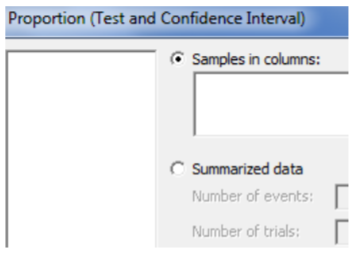15.3.8: Chapter 9 Lab
- Page ID
- 28622
Open MINITAB file lab08.mpj from the website. This data represents information for 700 instructors from the popular website ratemyprofessors.com. All instructors are sampled from the Foothill‐De Anza Community College District. Here is a description of the data:
| College | Foothill or De Anza |
| Smiley |  Positive Positive  Neutral Neutral  Negative Negative |
| Photo | Instructor has a photo |
| Hot |  Instructor has a chili pepper Instructor has a chili pepper |
| Gender | Male or Female |
| Dept | Academic Department (example ‐ Mathematics) |
| Division | Academic Division (example ‐ PSME) |
| Num | Number of Ratings for that faculty member |
| Overall | Average Overall Quality Rating (1‐5 scale, lowest to highest) |
| Easiness | Average Easiness Rating (1‐5 scale, hardest to easiest) |
The BASIC STATISTICS>GRAPHICAL SUMMARY feature of MINITAB allows you to create confidence intervals for the population mean and standard deviation. You can set the confidence level to what you want.
(Question 1 – 5) For questions 3 to 6 you will need to use the "By Variables" option in MINITAB
- Find a 95% confidence interval for the mean easiness rating of instructors. Analyze and interpret the confidence interval.
- Find a 99% confidence interval for the mean easiness rating of instructors. Analyze and interpret the confidence interval. Compare your results to question 1 and explain why the confidence interval has a higher margin of error.
- Find a 95% confidence interval for the standard deviation of easiness rating of instructors. Analyze and interpret the confidence interval.
- Find 95% confidence intervals for the mean easiness rating of instructors at each college. Compare the confidence intervals. Do they seem to be different?
- Find 95% confidence intervals for the mean easiness rating of instructors by gender. Compare the confidence intervals. Do they seem to be different?
- Find 95% confidence intervals for the mean easiness rating of instructors by hotness rating. Compare the confidence intervals. Do they seem to be different?
- Find 95% confidence intervals for the mean easiness rating of instructors by division. Compare the confidence intervals. Do they seem to be different?
Confidence Intervals for proportions can be run in Minitab using the command STAT>BASIC STATISTICS>1 PROPORTION.

- Make and analyze the proportion of male instructors
- Find a 95% Confidence Interval for the proportion of male instructors. What is the Margin of Error?
- Interpret this confidence Interval.
- Would you support a claim that women are underrepresented at these colleges? Explain.
You can use the Minitab command DATA>SUBSET WORKSHEET to look at an individual department, for example. We want create a worksheet of just Mathematics Instructors, so select Condition and set 'Dept'="Mathematics".

- Find a 95% Confidence Interval for the proportion of male mathematics instructors.
- Interpret this confidence Interval.
- Would you support a claim that women are underrepresented in the Mathematics Departments at these two colleges? Explain.


